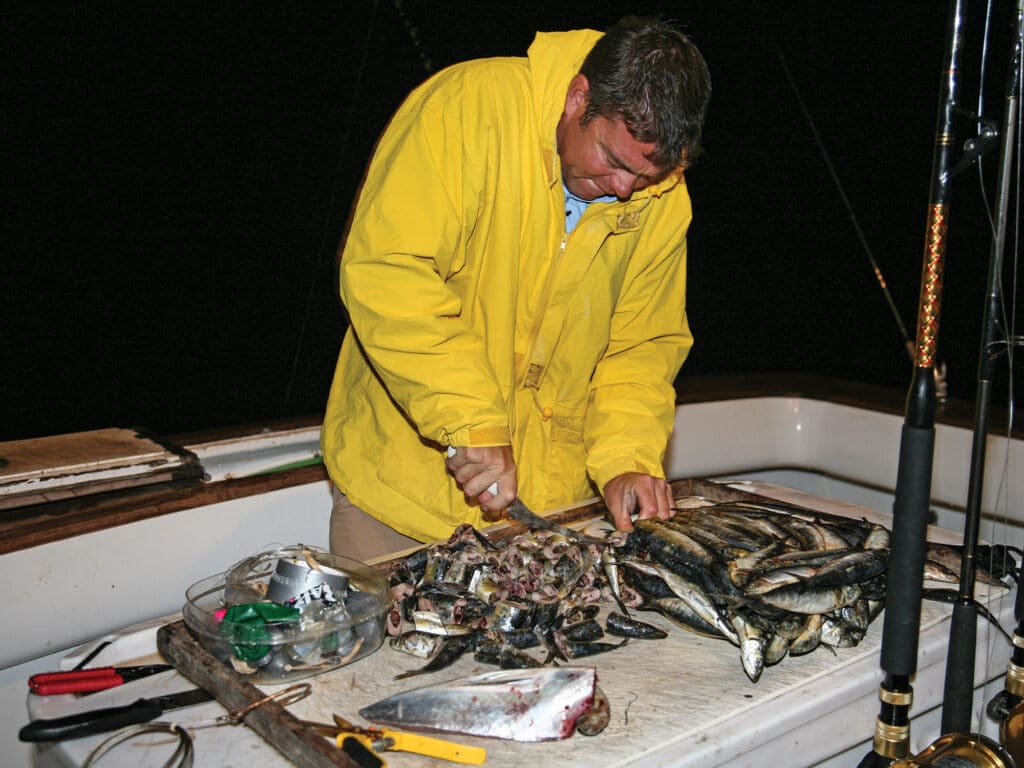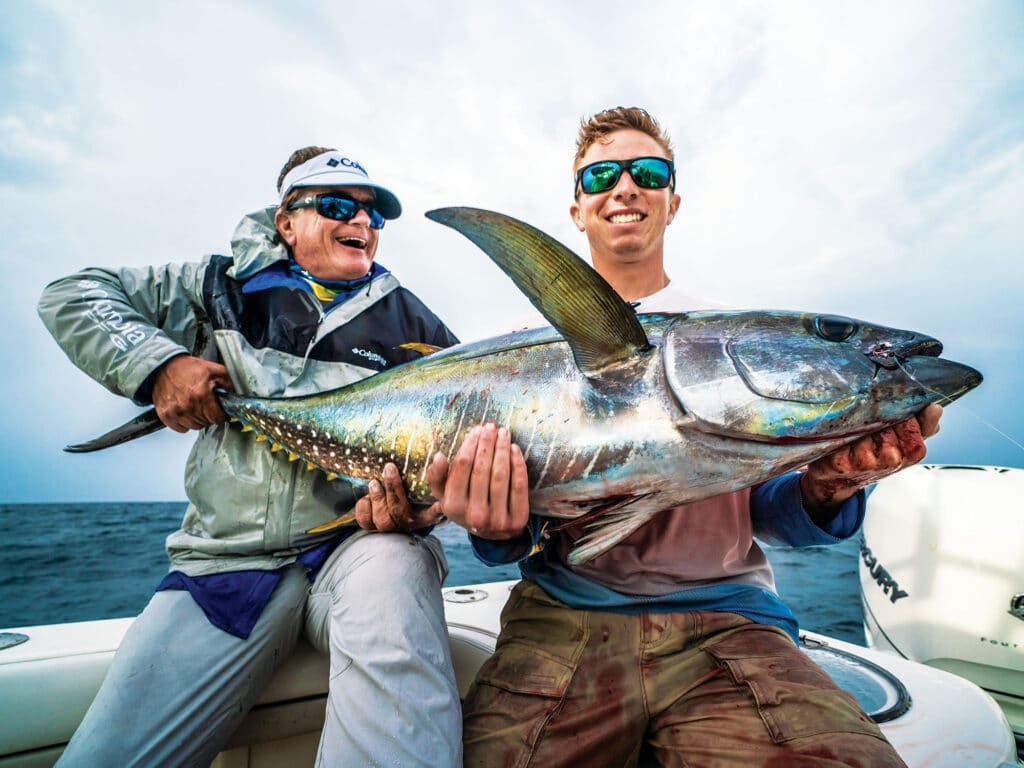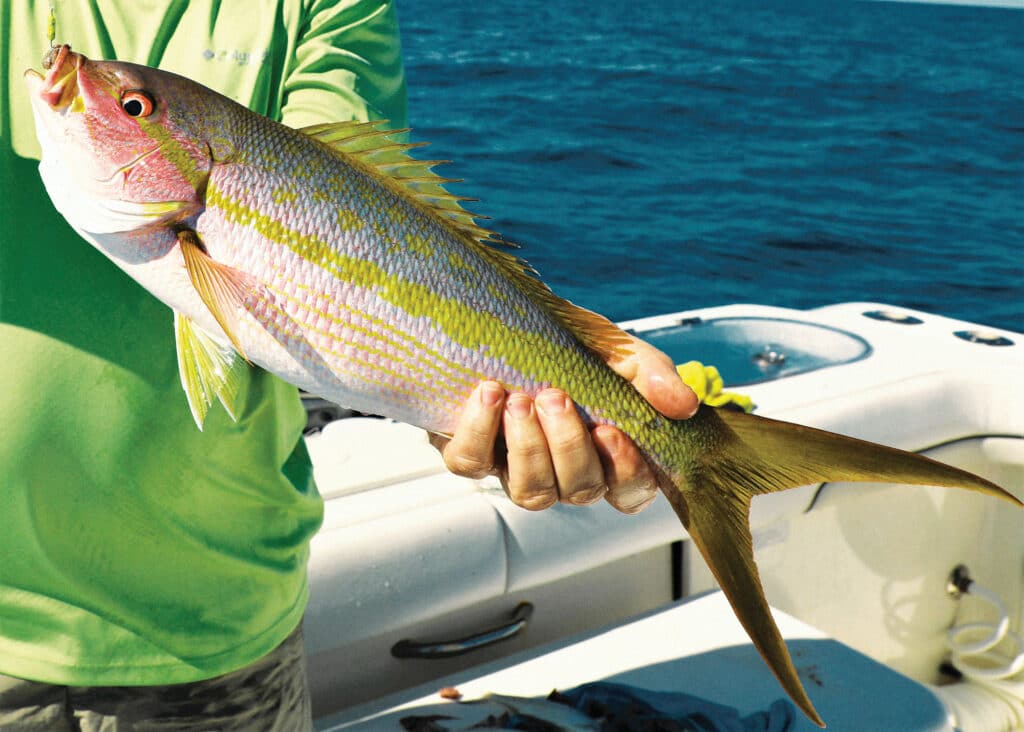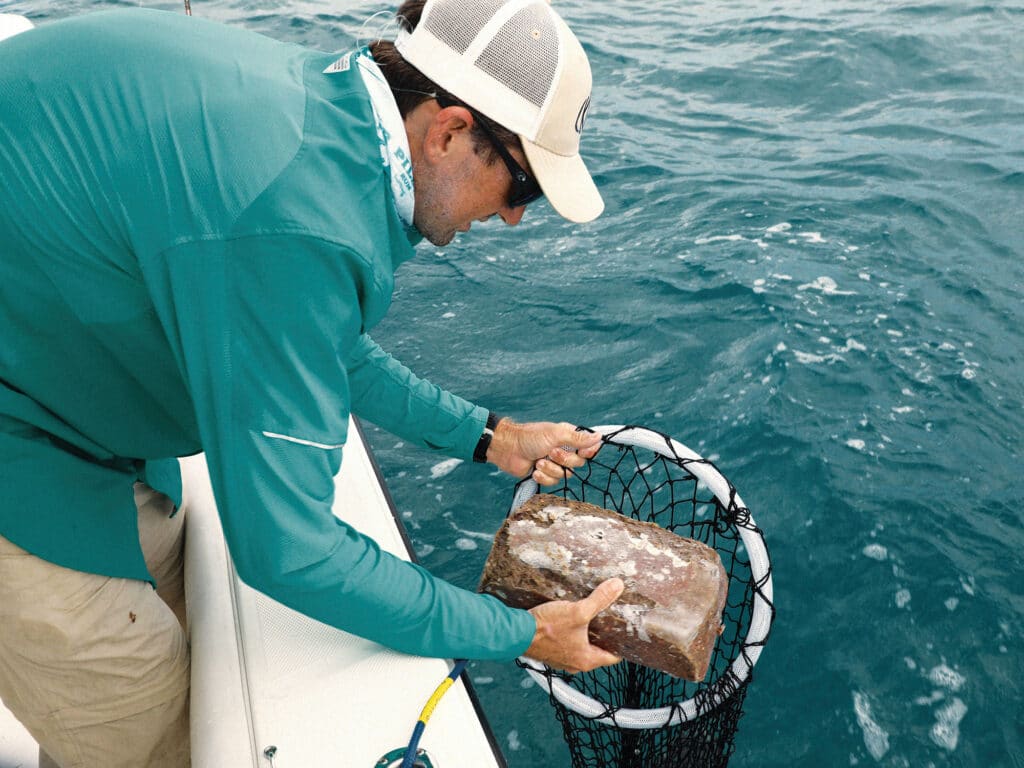
Too many people think chumming is elementary. It might look like you’re pushing the easy button, but in reality, it’s a skill that takes time to perfect. These tricks will help you up your chumming game whenever your water needs sweetening.
Raise Your Profile
A prime example of proper chumming lies with yellowtail snapper. I seek high-profile reefs along tight depth contours. Whether you thaw a frozen concoction of ground fish off the transom or broadcast live pilchards, success hinges on this chum reaching this target. Do it right and fish will rise to the surface in droves. Miss the mark and failure will be apparent.
With the right breeze or current, our chum permeates through not only our target structure but also the drop-offs beyond. This draws in other snapper, grouper, amberjack and pelagics, such as trophy king mackerel, rainbow runners, and the occasional mahi or sailfish.
It’s not too unlike sharking off the Northeast, where you have to fine-tune your drifts to remain over similar contour lines longer. The more thorough and unbroken the chum trail, the better the odds of a mako picking up the scent and a bait. Minimal resets are key.

Read the Lumps
For pelagics around deep wrecks and humps, chum their up-current sides. For blackfin tuna, we use the boat’s throttles to stem the current while simultaneously broadcasting live pilchards and even sardine chunks into upwellings caused by current striking structure. These displace nutrients into the middle and upper water columns. Baitfish feed on these nutrients and, in turn, attract pelagic species.
Off the mid-Atlantic, Northeast and Gulf of Mexico, such lumps are feeding stations on the migratory paths of yellowfin and bluefin tuna. Exactly where to anchor depends on the size of the lump, the weather, sea conditions and the amount of forage. New Jersey’s Ryan DeGraw suggests first making a drift over a lump and watching the sonar for where the bait and tuna are sitting.
“A lot of times when the tuna aren’t actively feeding, they will be closer to the lump itself,” DeGraw says. “In those instances, it’s better to set up ahead of the lump and drift your baits back to draw the fish into thinking there’s a feeding event up-current of them. If the fish are actively feeding, they’ll likely be off the lump itself, corralling bait from the surrounding area. In this case, setting up on the lump and chunking down-current is the deal.”

Lowball Pitches
A common tactic for luring snook out from underneath docks and mangroves is to pitch a scoop of live pilchards by their front door; they’ll charge out and devour the freebies with reckless abandon. Firing up grouper and snapper on deep rocks and wrecks is an entirely different game. You have to get creative when chumming deep, but it can pay big dividends.
Downriggers are a useful aid to chumming in deep waters and hard currents. I recall a cobia trip off Hilton Head, South Carolina, where Capt. Jim Clark anchored on the deep sides of rips and along bottom depressions in the Broad River. We soaked baits near and on the bottom. To attract cobia, Clark loaded a burlap sack with cut menhaden, stomped on it several times, attached it to a 10-pound downrigger weight, and positioned it right on bottom, where it held steadfast in the hard current. We caught several cobia this way.
I’ve chummed wrecks as deep as 250 feet by pinning a few whole pilchards, sardines or other small baits onto a 16-ounce deep jig. Once the jig reaches bottom, I’ll radically jig it several times to free the chum baits, then reel it up. These freebies flow with the current into, above or alongside the wreck, based on where the jig is dropped. Repeat the tactic a few times prior to lowering a loaded bait.
For shallower wrecks and rocks, simply use a lighter jig. I frequently do this when bottomfishing in 30 to 50 feet of water. Block chum flows with the current and eventually downward, bringing fish up off the bottom. By comparison, dispensing chum baits off a jig enables me to chum various parts of a bottom structure with some precision. It’s a good mood-changer for stubborn fish.
Based on depth, another way to dispense bait chunks to a structure is by tossing them way up-current of the anchored vessel. By the time the chunks flow past the boat, they should be in the zone with your hook baits and stoking fish to feed.
Know Your Cone
When positioning baits in the water column for sharks and tuna, for example, do so within an imaginary cone near the boat, whether it’s from block chum or chunks. That is, try shallow sets close to the boat and progressively deeper sets away from the boat.
It’s the same for yellowtails, mackerel or bonito with block chum. Free-line baits at the same rate of the chum flow and within its sphere. Adjustments to keep baits in that sphere can be as simple as adding or removing a split shot or a weighted jig head.
Read Next: How to Chum

Give Them a Taste
Chumming is a means to attract and hold fish, not fill them. The latter is a common mistake people make when trying to keep school mahi around their boat. In the excitement, paired with fear of the school leaving, anglers often broadcast too much chum. These fish will fill up on the overabundance of chum and lose interest.
Feed the fish sparingly and keep them competitive. Deploy as many hook baits as possible and, when fish are solidly on, set them in rod holders. This commotion will further stoke the school. Toss over a few more chunks, then systematically boat each fish, rebait and hook another. Take advantage of them quickly before they smarten up.
For tuna, how much chum you broadcast hinges on weather, ocean conditions and how abundant the fish are. If they’re scattered, toss out two or three chunks and repeat a minute or so after they flow out of sight.
Start live-chumming once you spot a tuna school. Whether it’s blackfins on the humps and wrecks off South Florida or yellowfins in the Gulf, you can ignite an intense feeding frenzy by rapidly dispatching a few large scoops of live pilchards. One person should keep chumming while everyone else pitches out hook baits. This is a game of heavy chumming and multiple hookups on each approach.
The pace of inshore live-chumming is considerably slower. One scoop of bait is enough to discover whether you’re dealing with one or two large snook, redfish or striped bass—or several smaller ones. Once determined, regulate your chumming accordingly.
Avoid Bad Baits
The difference between fresh chum—especially baitfish for chunking—becomes blatantly apparent when bird-dogging shrimp boats for blackfin tuna and cobia. There’s no comparing shrimp-boat bycatch acquired that morning to bait that has been frozen or iced down for several days. It’s the difference between flat-out feeding blitzes or trying to finesse a few fish into striking.
The same holds true for butterfish flats for tuna chunking. Purchase these through a highly reputable source. DeGraw says he has it figured out: “We used to buy flats of butterfish, but spending two hours throwing the net and getting gallons of peanut bunker is much more cost-efficient. Plus, you don’t have to cut them up; they’re ready to go and a good size.”









